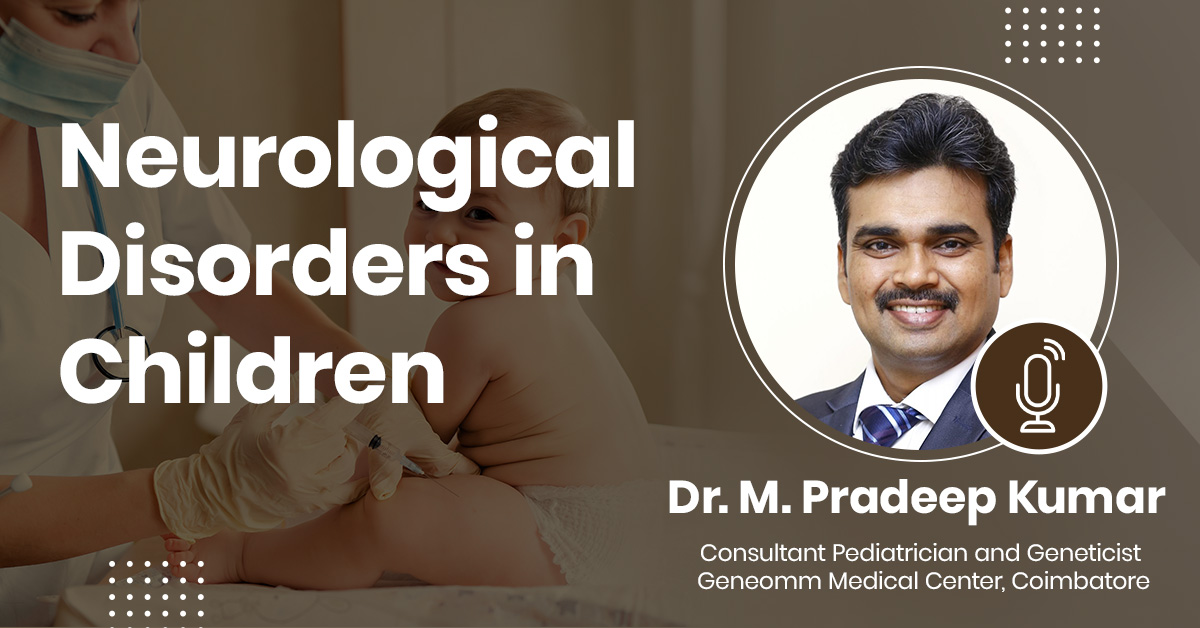- 108.4k views
Neurological Disorders in Children
Neurological disorders in children encompass a wide range of conditions affecting the developing nervous system. Common disorders include epilepsy, characterized by recurrent seizures that can impact a child's daily life and development. Cerebral palsy, a non-progressive disorder, affects movement, posture, and muscle coordination due to brain damage during early life. Autism spectrum disorders, marked by difficulties in social interaction and communication, fall within the neurological realm. Attention-deficit/hyperactivity disorder (ADHD) leads to challenges in sustaining attention, impulse control, and hyperactive behavior. Genetic conditions like Down syndrome affect both cognitive and neurological functions, leading to varying degrees of intellectual and developmental disabilities. Pediatric migraines can be debilitating, causing severe headaches, sensitivity to light, and nausea. Tourette syndrome manifests as involuntary movements and vocalizations, known as tics, that often appear during childhood. Developmental coordination disorder (DCD) affects motor skills, causing difficulties in activities like writing, tying shoelaces, and using utensils https://storage.googleapis.com/master-transformer-9446/Neurological%20Disorders%20In%20Children.mp4
About the Speaker

Dr M Pradeep kumar
Consultant Pediatrician and Geneticist Geneomm Medical Center, Coimbatore
Medical advisor for various parental organizations caring for rare diseases. Convened many CME programmes, Marathons, Camps and public activities to create awareness about rare genetic disorders. National speaker – Indian Academy of Medical Genetics and Indian academy of pediatrics, Invited State speaker from IRIA, Obstetrics and Fetal medicine societies.
Upcoming Case Discussions
Acne: Disorders and Treatment Approaches
Acne is a common dermatological condition caused by clogged pores, excess sebum production, bacterial growth, and inflammation. It can manifest as blackheads, whiteheads, papules, pustules, or cysts, often leading to scarring if untreated. Various factors, including hormonal changes, diet, stress, and genetics, influence its severity. Treatment approaches range from topical and oral medications, such as retinoids, antibiotics, and hormonal therapy, to advanced procedures like chemical peels and laser therapy. A personalized skincare regimen, along with lifestyle modifications, plays a crucial role in managing and preventing acne.
Congenital Uterine Anomalies
Congenital uterine anomalies are structural abnormalities of the uterus resulting from improper fusion, canalization, or resorption of the Müllerian ducts during fetal development. These anomalies include septate, bicornuate, unicornuate, and didelphys uterus, among others. They can be asymptomatic or associated with infertility, recurrent pregnancy loss, preterm birth, or abnormal menstruation. Diagnosis is typically made using imaging modalities like ultrasound, MRI, or hysterosalpingography. Treatment depends on the type and severity of the anomaly, with surgical correction such as hysteroscopic septum resection often indicated in symptomatic cases. Early detection is crucial for optimizing reproductive outcomes and guiding appropriate management strategies.
Management of Postoperative Pain: Best Practices for GP’s
Effective management of postoperative pain is crucial for promoting recovery and preventing complications. General practitioners should start by assessing pain severity using appropriate scales, then tailor the treatment plan based on the patient's medical history and the type of surgery. A combination of pharmacological approaches, such as non-opioid analgesics (e.g., NSAIDs) and opioids when necessary, should be used to minimize pain while reducing the risk of addiction. Multimodal strategies, including physical therapy and non-pharmacological techniques like cold therapy or mindfulness, can further enhance pain relief. Close follow-up is essential to adjust the treatment as needed and ensure the patient's pain is well-controlled.
Diabetes and Stem Cells: What Does the Future Hold?
The future of diabetes treatment may be revolutionized by stem cell research, offering hope for a long-term cure. Scientists are developing stem cell therapies that could regenerate insulin-producing beta cells in the pancreas, potentially restoring natural insulin production in people with type 1 diabetes. Early clinical trials have shown promising results, with some patients reducing or eliminating their need for insulin injections. While challenges like immune rejection and long-term efficacy remain, continued advancements suggest stem cell therapy could significantly change diabetes management in the coming years.






